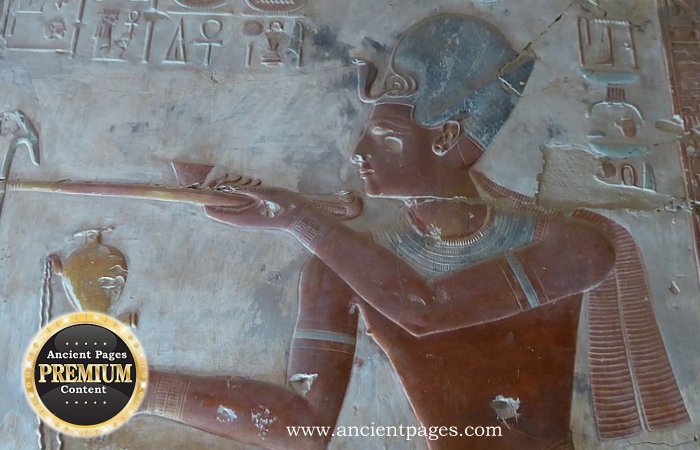Seti I – Remarkable Pharaoh Who Saved The Kingdom Of Egypt And Gave It New Glory
Ellen Lloyd - AncientPages.com - Greatly overshadowed by his son, Ramesses II, today hailed as the greatest Pharaoh of all time, Seti I did more for ancient Egypt than most realize. Pharaoh Seti I reigned for only ten or possibly fifteen years, but his deeds and accomplishments equaled those of a much longer reign.
Few rulers would envy the problems Seti I faced when he ascended the throne in 1290 B.C. (or 1294 B.C., according to some historians). The new Pharaoh became the ruler of a weak kingdom. Many great ancient Egyptian temples were partly ruined, and foreign enemies had their eyes on Egypt, considering it an easy military target. Egypt is doomed if the new Pharaoh fails to conquer the hostile neighboring kingdoms.
Nevertheless, Seti I did what was expected of him, and perhaps even more. Against all odds, he saved the kingdom of Egypt and gave it new life, but how did he accomplish this?
If we look through modern eyes, it is easy to say that Pharaoh Seti I was brutal and cruel. He did not hesitate to execute many prisoners before Amun and later memorialized his successful military campaign on temple walls. When Seti I lived, this was a standard procedure, and Pharaoh Seti did what every Egyptian king would have done.
So, who was this Pharaoh who reigned for a brief period and accomplished so much? Why was Seti I one of the greatest figures in the history of Egypt?
This is a preview of our premium article available only to members of Ancient Pages.
Become a member to read more - Click here
If you are already a member and have logged in to your account, you can access the article here
See also:
The Hittites – Rise And Fall Of An Ancient Powerful Empire
Castro People: Intriguing Life Of The Female-Dominated Society In Ancient Iberia
Celtiberians: Intriguing Martial Culture And Their Skilled Warrior Infantry
Don't miss: Ancient Pages Library Of Ancient And Unexplained Mysteries
More From Ancient Pages
-
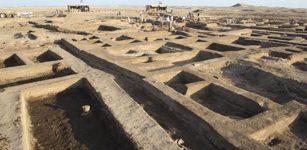 Remains of Santorini Volcanic Eruption Discovered West Of Suez Canal
Archaeology | Jan 3, 2016
Remains of Santorini Volcanic Eruption Discovered West Of Suez Canal
Archaeology | Jan 3, 2016 -
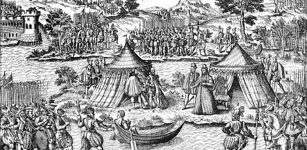 On This Day In History: Edict Of Longjumeau Was Signed And Ended Second War of Religion – On Mar 23, 1568
News | Mar 23, 2017
On This Day In History: Edict Of Longjumeau Was Signed And Ended Second War of Religion – On Mar 23, 1568
News | Mar 23, 2017 -
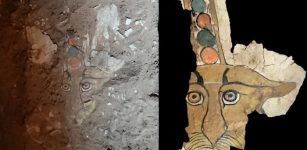 Rare Ancient Leopard Painting Discovered On Sarcophagus In Aswan, Egypt
Archaeology | Feb 25, 2020
Rare Ancient Leopard Painting Discovered On Sarcophagus In Aswan, Egypt
Archaeology | Feb 25, 2020 -
 On This Day In History: Tunguska Explosion: Mysterious And Ferocious Impact In Remote Siberia – On June 30, 1908
News | Jun 30, 2016
On This Day In History: Tunguska Explosion: Mysterious And Ferocious Impact In Remote Siberia – On June 30, 1908
News | Jun 30, 2016 -
 Evidence Of A Hybrid Population Of Neanderthals And Modern Humans Discovered At La Cotte De St Brelade
Archaeology | Feb 9, 2021
Evidence Of A Hybrid Population Of Neanderthals And Modern Humans Discovered At La Cotte De St Brelade
Archaeology | Feb 9, 2021 -
 Ancient Town’s Destruction Dated With Help Of Chicken Bones And Snail Shells
Archaeology | Aug 17, 2022
Ancient Town’s Destruction Dated With Help Of Chicken Bones And Snail Shells
Archaeology | Aug 17, 2022 -
 Teaching Is Not Essential For People To Learn How To Make Tools, Study Says
Archaeology | Dec 6, 2015
Teaching Is Not Essential For People To Learn How To Make Tools, Study Says
Archaeology | Dec 6, 2015 -
 Moses’ Secret Knowledge Of Superior And Forbidden Technology – Alien Intervention And Events Erased From Historical Records – Part 2
Ancient Mysteries | Sep 24, 2020
Moses’ Secret Knowledge Of Superior And Forbidden Technology – Alien Intervention And Events Erased From Historical Records – Part 2
Ancient Mysteries | Sep 24, 2020 -
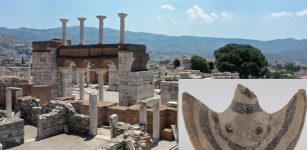 3,200-Year-Old Mycenaean Statuette Sheds New Light On The Hittites
Archaeology | Jun 22, 2022
3,200-Year-Old Mycenaean Statuette Sheds New Light On The Hittites
Archaeology | Jun 22, 2022 -
 Mystery Of Ancient “Magical” Mirrors – Some Of The Strangest Objects In The World
Ancient Mysteries | Apr 21, 2011
Mystery Of Ancient “Magical” Mirrors – Some Of The Strangest Objects In The World
Ancient Mysteries | Apr 21, 2011 -
 Prehistoric Spread Of Millet From East Asia To Central Europe – New Study
Archaeology | Jun 10, 2022
Prehistoric Spread Of Millet From East Asia To Central Europe – New Study
Archaeology | Jun 10, 2022 -
 Legacy Of The Iconic Sycamore Gap Tree – Historical Landmark At Hadrian’s Wall
Featured Stories | Mar 28, 2024
Legacy Of The Iconic Sycamore Gap Tree – Historical Landmark At Hadrian’s Wall
Featured Stories | Mar 28, 2024 -
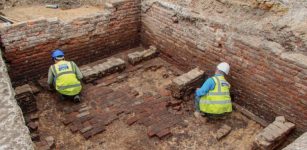 London’s Oldest Theater Red Lion Discovered Beneath Whitechapel
Archaeology | Jun 10, 2020
London’s Oldest Theater Red Lion Discovered Beneath Whitechapel
Archaeology | Jun 10, 2020 -
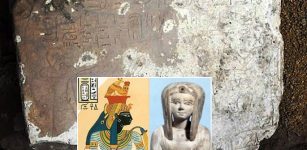 Limestone Stela Of Liberation Discovered In Kom Ombo Temple In Aswan, Egypt
Archaeology | Oct 17, 2018
Limestone Stela Of Liberation Discovered In Kom Ombo Temple In Aswan, Egypt
Archaeology | Oct 17, 2018 -
 Jörmungandr – Hideous Poison-Spewing Midgard Serpent Was One Of Loki’s Children
Featured Stories | Mar 31, 2018
Jörmungandr – Hideous Poison-Spewing Midgard Serpent Was One Of Loki’s Children
Featured Stories | Mar 31, 2018 -
 Unsolved Ancient Mystery: Why Were These Foreign Shoes Hidden In A Temple?
Archaeology | Mar 29, 2014
Unsolved Ancient Mystery: Why Were These Foreign Shoes Hidden In A Temple?
Archaeology | Mar 29, 2014 -
 The Phrase Hip Hip Hooray Has Ancient Roots
Ancient History Facts | Jun 6, 2018
The Phrase Hip Hip Hooray Has Ancient Roots
Ancient History Facts | Jun 6, 2018 -
 Gravitational Waves Shed Light On The Mysterious Antikythera Mechanism
News | Jun 29, 2024
Gravitational Waves Shed Light On The Mysterious Antikythera Mechanism
News | Jun 29, 2024 -
 Charles VI Of France – The King Who Was Made Of Glass
Featured Stories | Jan 22, 2016
Charles VI Of France – The King Who Was Made Of Glass
Featured Stories | Jan 22, 2016 -
 Large Statue Of Ancient Guardian Discovered At Angkor Wat
Archaeology | Aug 7, 2017
Large Statue Of Ancient Guardian Discovered At Angkor Wat
Archaeology | Aug 7, 2017

